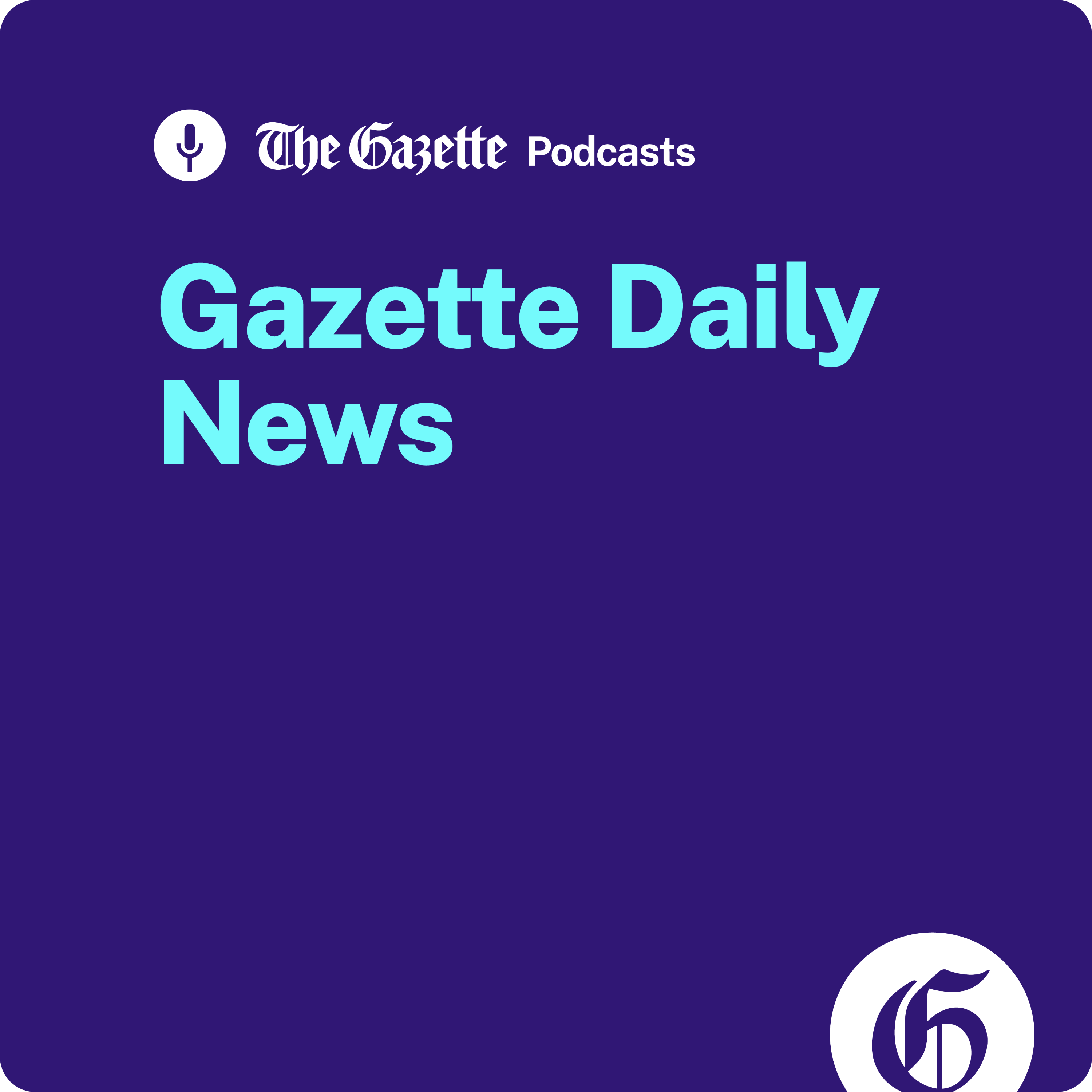Gazette Daily News Briefing, July 7
This is Stephen Schmidt from the Gazette Digital News Desk, and I’m here with your update for Friday, July 7.
It will become increasingly cloudy during the day Friday, with a chance for rain later on. According to the National Weather Service there will be a high of 79 degrees in Cedar Rapids. There will be up to a 50 percent chance of rain Friday night, with a quarter inch of rain or less predicted, with the possibility for heavier rain if thunderstorms develop.
Drought conditions have rapidly deteriorated across the Midwest over the past few weeks — and it’s uncertain how much rain will come the rest of this summer, experts said Thursday during a webinar hosted by the National Oceanic and Atmospheric Administration and several climate partners.
May and June are historically the rainiest months for Midwestern states, said Molly Woloszyn, the regional drought information coordinator for NOAA's National Integrated Drought Information System.
Most areas in the region departed from that, though, with much of Eastern Iowa receiving 4 inches less of precipitation than normal.
Hotter than normal daytime temperatures are also intensifying dryness in the Midwest. The midday heat encourages water to evaporate from soils, contributing to low moisture levels across Iowa, Missouri, Illinois, Kansas and eastern Nebraska.
Agricultural conditions have declined throughout the region, said Dennis Todey, director of the U.S. Department of Agriculture’s Midwest Climate Hub.
Pasture and range conditions have deteriorated rapidly, causing some Midwest ranchers to sell off cattle. Only 24 percent of Iowa’s pastures and ranges are in good or excellent condition.
As corn crops enter their reproductive stage, called tasseling, in the coming weeks, drought conditions could impact their yield. Time will tell how soybeans fare as they enter their critical growing stages by August. Specialty crops across the region have suffered reduced or no yields.
More than 29,000 Iowa students applied to receive roughly $7,600 in state money to be used to pay for private school costs such as tuition and fees. And nearly 17,500 students — the majority of whom already attend private schools — have been approved so far, Iowa Gov. Kim Reynolds announced Thursday.
The numbers exceed state projections that predicted 14,068 students would be approved to receive education savings accounts in the program's first year.
However, the final cost of the program and the final number of education savings account — or ESA — program participants will not be available until certified school enrollment numbers are finalized in October, Reynolds’ office said.
And not every family approved may be able to use the state-funded assistance, as space is limited at Iowa’s private schools. Some have wait lists for certain grades and are turning families away, while others say they’re nowhere near capacity.
The governor's office said accredited private schools have reported there are roughly 9,000 slots available across the state for new private school students, meaning there could be more students approved than seats available in private schools.

